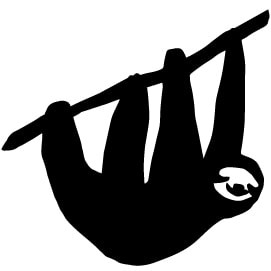Evolution of
Protective Coloration
|
1. Sensory Signals calming warm-up exercise outside Like humans, other animals also navigate in the environment using their senses, reading signals from their surroundings. Even though other than human animals do not have verbal communication like us to signal each other, they communicate in multiple other ways (like using warning or protective signals and colours), and many have their own language systems that we humans just do not understand. For us as humans, the verbal cues can be quite dominating over other ways of communication and reading environment, but we are constantly receiving, and being influenced by, a lot of other kinds of information also. What if we would leave verbal communication aside for a while, and explored other signals we receive from our surroundings constantly. What kind of knowledge we will get from the environment without words, and how would we navigate in it? What are the non-verbal signposts we read? Exercise is done outdoors, exploring the school yard and its near environment. The chosen area should ideally be calm enough for allowing silent and focused time for participants. It works as calming, warm-up exercise for creative work. Materials needed:
– – – – – – – – – – Task given for the participants: What kind of signals and information you get from the environment through your senses? Observe, which colours, shapes, smells or sounds attract you, and which ones you turn away from? Move around the area, and make visual or verbal notes and sketches about these observations and impressions. It's good to have minimum of 20 minutes up to 1 hour for the exploration, as it takes a while to tune in to the environment. It can be useful to start the exercise with standing in silence with the group, eyes closed, to get time to land into the environment and quiet the mind. Did you find something new from the familiar surroundings? – – – – – – – – – – 2. Strange creatures club What sort of warning and protection signals can we think other creatures to have? The task is to create a collection of imagined plants or insects that communicate with their environment using a colourful variety of signals. Participants can use the notes from the sensory environment as a supportive material for this exercise. Materials needed:
Task given for the participants: In small groups, create your own imaginary plant or creature, that uses either protective or warning colours against predators. Who does it want to protect itself from, or who does it want to attract? What kind of shapes, smells, colours, sounds or other means it uses for protection or warning signals? What kind of and environment it lives in? What is the new species called? You can also make use of the information heard in the lecture, and sensory notes you collected outdoors as your inspiration. Every group can brainstorm together what kind of creature they would like, before starting drawing or painting it on cardboard or big paper. The ready works could be exhibited as a collection of strange creatures, and it would be great to have enough of time so that all the groups have time to show and explain what their creatures are, and how they behave. Extra task if there's more time: * Groups can also create soundscape for their creatures, that can be recorded. * Working method can also be a small installation, or sculpture of creature. Participants can work site-specificly outside, where the group chooses a living habitat for the plant / creature, using the materials found from the environment (together with clay, string, etc.). The task can be finished with a little tour on created art trail, where groups can present their work. |
|
– – – – – – – – – –
Our materials are licensed under the Creative Commons Attribution-ShareAlike 4.0 International License: http://creativecommons.org/licenses/by-sa/4.0/. It means you can use our materials freely, but please remember to always credit our work and mention us whenever you are sharing contents of our project online: Instagram: @evolution_in_action, Facebook: @evoluutiopajat, Twitter: @EvoWorkshops. If you use our materials in teaching, we are happy to hear greetings and feedback. You can tag us on social media or send us an email: [email protected] Evolution in Action logo: jpeg, eps |
